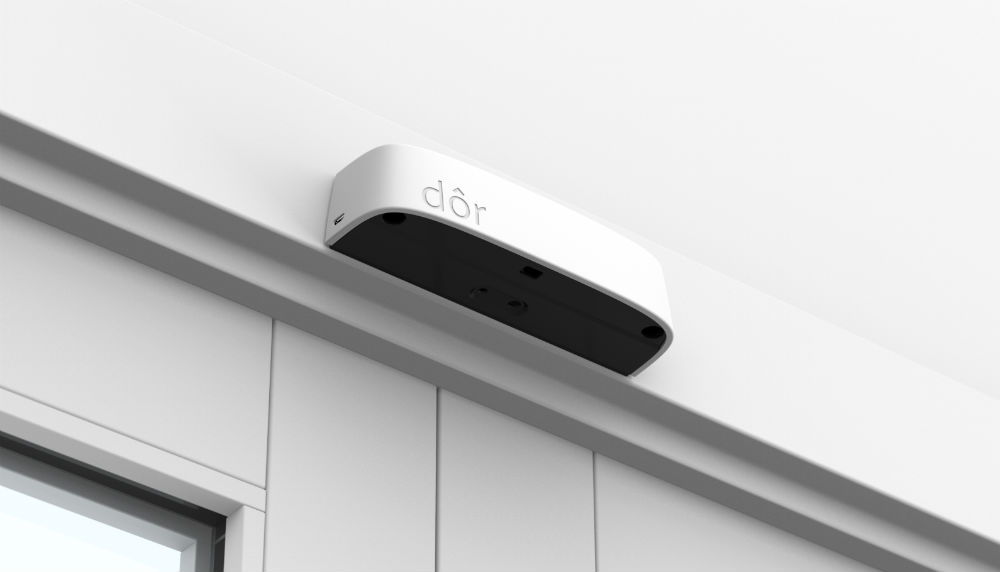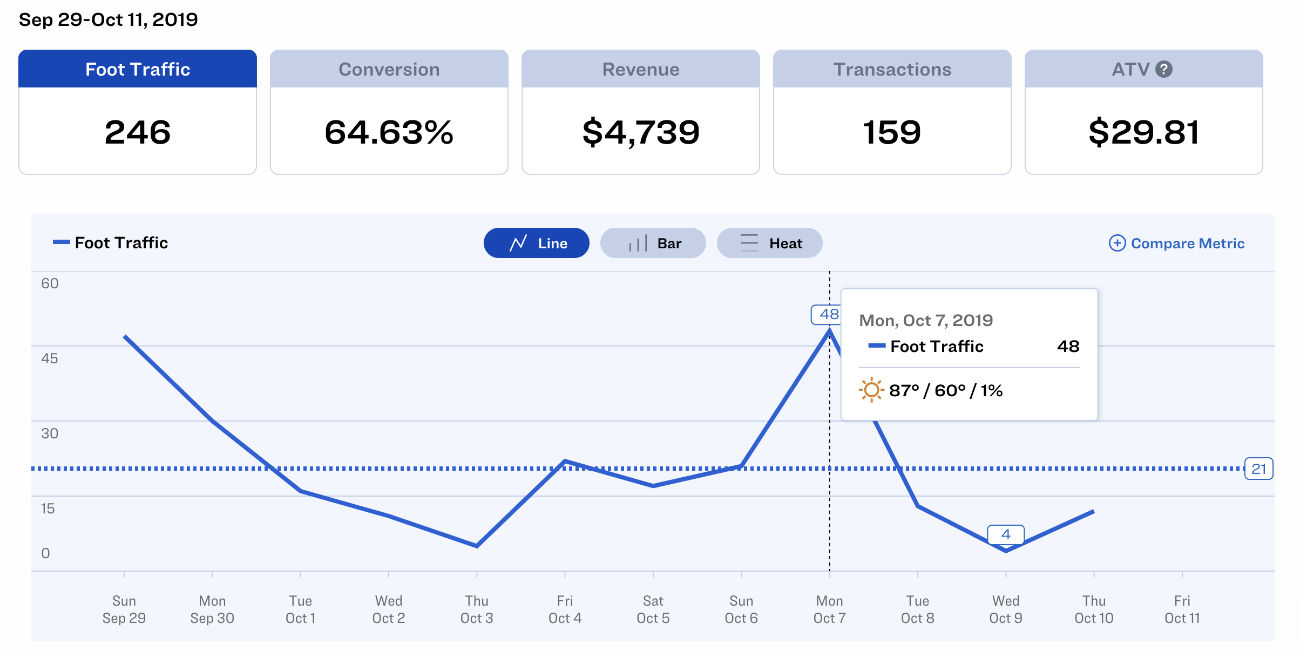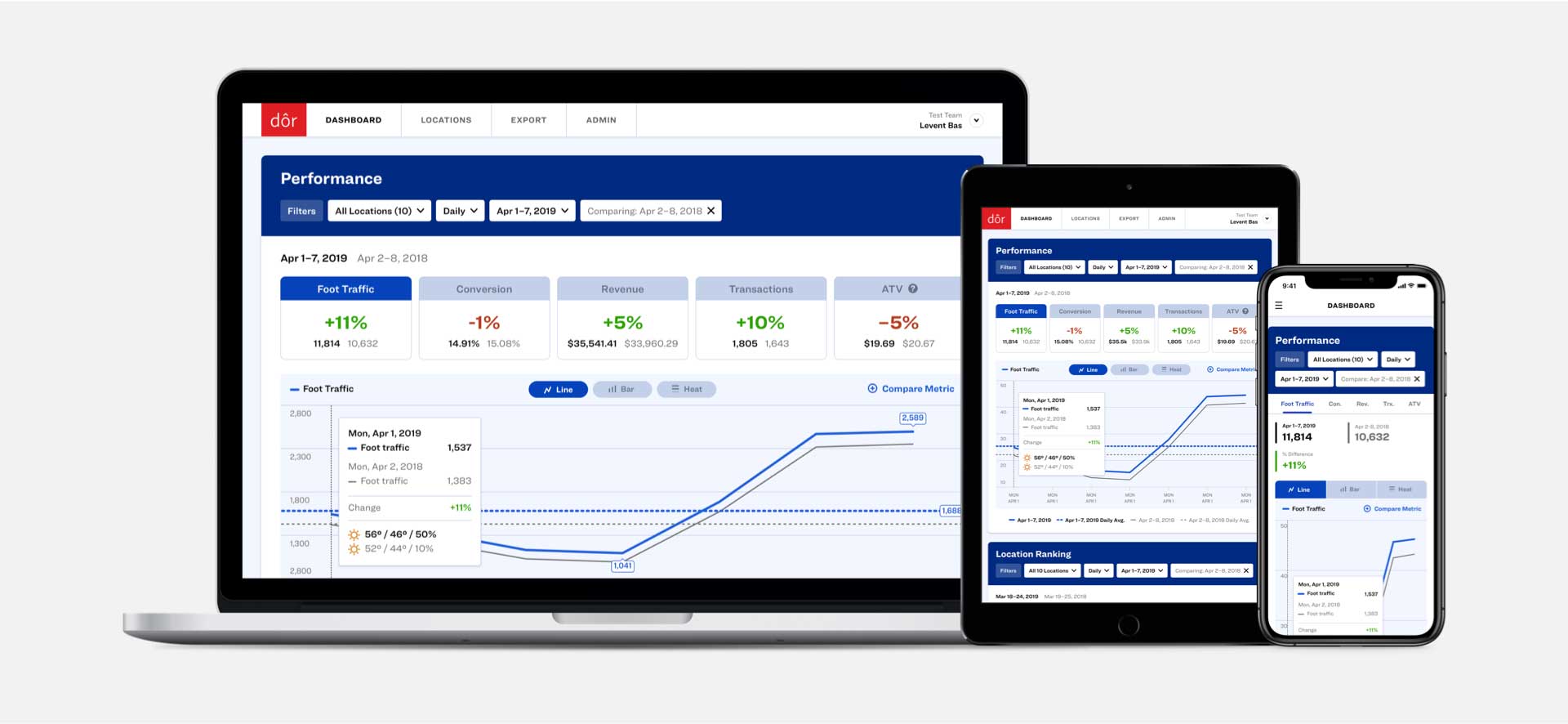If you’re a retailer that’s been relying on anecdotal information from employees about how many people are visiting your store, then you may want to consider leveraging a people counting technology to get a more accurate picture. But with the vast array of door traffic solutions on the market, choosing a foot traffic counter is easier said than done.
With this in mind, let’s take a closer look at why retailers need to start tracking foot traffic, the different types of people counters available, and the questions retailers should ask when choosing their people counting solution.
Why People Counting Is Essential For Retail Businesses
While people counting can measure the occupancy of a store, there are many additional insights that accurate foot traffic data can provide retailers.
➣ Understanding customer behavior
For retailers, understanding their customers is often the highest priority.
Luckily, foot traffic data can be used to further understand customer behavior by tracking when they arrive at the store and which hours of the day and which days of the week are more or less crowded etc.
By integrating people counter data with other systems — like a point of sale solution — retailers can analyze the data in-context as well. Using this information, retailers can then optimize their marketing efforts and improve the customer experience to increase conversions.
➣ Optimizing staff scheduling
Many retail stores struggle to have the right number of employees at the right time.
Often, retail managers either waste resources by overstaffing their stores, or they risk losing out on sales with understaffed stores. By gaining insight into the times when a store is usually most busy, retailers can optimize their staff scheduling.
➣ Measuring marketing efforts
For retailers to continuously improve their marketing campaigns, they need an accurate way to measure their effectiveness. An uptick in people visiting stores may signal a strong marketing campaign, for example, but stagnant conversions could indicate poor in-store operations.
Related: 15 Social Media Marketing Tips for Retailers to Increase Sales
With people counting technology, therefore, retailers can go beyond measuring sales and begin analyzing store visits and conversions.
➣ Understanding how external factors affect business
With accurate foot traffic data over months or years, retailers can understand how external factors will impact their business.
Related: 7 Factors That Affect Foot Traffic for Retailers
That means they can predict if poor weather will reduce store visitors or if an upcoming holiday will be more crowded than usual. People counting, therefore, lets retailers make better business decisions based on factors that are out of their control.
➣ Comparing the performances of different stores
For large retail chains, it’s critical to compare the performance of different store locations.
By analyzing foot traffic and conversions, retailers can study why some stores perform better than others. This information enables retail chains to make better decisions when expanding to new locations.

The Different Types of People Counters
There are a number of different approaches to people counting, but not all of them are created equal. Here’s a closer look at the various types of people counting sensors available:
➣ Thermal
Using sensors to capture a thermal imaging feed, Dor's first-of-its-kind, battery-powered thermal foot traffic counter leverages machine learning to count the heat signatures of store visitors.
Related: Deep dive: Why do we use a thermal sensor?
Thermal sensors work in a wide variety of lighting conditions and do not capture any private or personally identifiable information. They’re usually easy to install to the tops or sides of doorways without the assistance of technicians as well.
Click here to discover how a people counting solution like Dor can help your team make better business decisions based on your store's foot traffic data.
➣ Cameras
By recording a video feed of a particular location to capture store visitor activity, retailers can obtain foot traffic data. Camera counters usually need to be fixed to ceilings or walls by a technician, so they’re often more expensive and time-consuming to install. For the most accurate data — especially if the people counter leverages machine learning technologies to detect people within the video feed — the cameras require sufficient lighting and frequent calibration.
➣ Breakbeams
Using an infrared emitter and receiver, these sensors can detect motion by tracking when the beam between them is broken. The breakbeam sensors must be installed opposite each other and accurately calibrated so that the emitter and receiver are aimed at each other. The problem with breakbeam sensors is they can only work where they are placed and they need a distance between the emitter and receiver. That means these door counters may not be suitable for all entrances and doorways.
➣ WiFi
By tracking the number of pings from visitor cellphones using a WiFi receiver, retailers can get a general sense of foot traffic — at least those carrying a smartphone. While this approach enables retailers to utilize retargeting on those visitors that sign into the WiFi, businesses also risk violating the privacy of store visitors by capturing personal data without prior consent. In addition to that, customers who are not having an active WiFi connection are not captured as foot traffic data which leads to poor accuracy.
➣ Bluetooth Beacons
Using Bluetooth beacons, retailers can transmit a unique identifier that gets picked up by nearby smartphones. Similar to WiFi counters, however, this approach will only be able to track store visitors with a mobile device that has Bluetooth enabled.
Related: Retail Analytics Buyers' Guide

The questions you need to ask to a people counting provider
Before you choose a people counting solution, it’s essential that you ask the right questions so that you find one that fits the needs of your business. Here are some key questions to get you started.
➣ Insights
1. Can I easily view daily, weekly, monthly, and yearly foot traffic data from one interface?
2. Is it possible to compare the KPIs of different store locations from a single screen?
3. Can the data collected enable me to plan in-store staffing effectively?
➣ Installation
4. Does it take long to install a sensor, and can a store employee do it himself?
5. How long would it take to roll out the sensors across all store locations?
6. Is there additional power or Ethernet requirements for the sensor?
➣ Costs
7. What is the cost of accessing the foot traffic data? And is it a one-time fee or subscription-based model?
8. Will there be additional costs to calibrate or maintain the sensors?
9. Are there installation fees or other initial costs?
➣ Data
10. Do I have direct control over accessing the data?
11. Does the people counter solution provider share the data with anyone else?
12. Can sales data be easily integrated with the people counting platform?
13. Does the solution track only foot traffic, or does it track other data as well?
➣ Technology
14. Can the people tracker be used in fitting rooms, bathrooms, and other locations?
15. Can the solution integrate with third-party software such as point-of-sale systems, online retail platforms, and more?
16. Can the platform scale if our locations doubled or tripled?
17. Does the people counting solution provider have a good track record?

Dor fuels retail success
Retailers need an accurate measure of foot traffic so that they can gain a better understanding of customer behavior, and how both their internal marketing efforts and external factors impact their business.
They also need a people counting solution to optimize their staffing and benchmark store performance. A reliable people counter like Dor — the first battery-powered thermal sensor — can fuel retail success.
With a thermal sensor, Dor can be installed in a variety of locations and conditions, from retail stores to corporate offices or other crowded facilities. By leveraging machine learning algorithms, Dor is constantly learning and continues to get more accurate at people counting.
In addition, the Dor API enables retailers to easily connect with third-party systems. That means they can gain valuable insight into conversion rates, for example, by integrating Dor with their point-of-sale system.
Dor only tracks people anonymously, so there’s no risk for violating people’s privacy either.
When it comes to price, not many people counting solutions can match Dor. That’s because Dor uses affordable — yet still reliable — thermal sensors rather than more expensive sensors such as video camera sensors.
There are also fewer installation costs because Dor doesn’t require a power outlet or video calibrating. For these reasons, Dor can offer the best price possible, and retailers don’t need to worry about installation costs or loss of time. In fact, Dor can be installed in minutes and scaled to hundreds of stores. 4 Wheel Parts, for example, was able to install Dor in 93 stores in less than two days.
There’s no reason for retailers to operate in the dark, so they should consider a people counting solution that fits their business needs. Just be sure to ask the right questions.
Click here to discover how a people counting solution like Dor can help your team make better business decisions based on your store's foot traffic data.